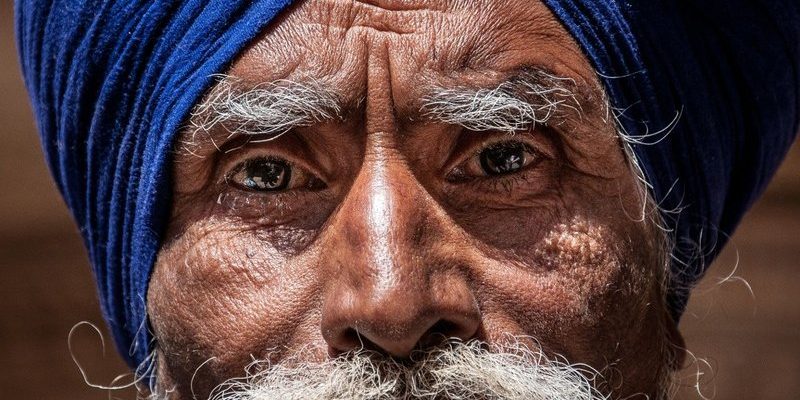
You might picture a beautifully balanced ecosystem—plants, animals, and insects all interacting in a delicate dance. The Indian cobra is a significant part of this dance, helping balance populations of prey and predators. This is not just a tale of survival; it’s about the intricate connections that sustain life. So, let’s dive deeper into the Indian cobra’s world and explore how it impacts its surroundings.
Understanding the Indian Cobra
The Indian cobra is one of the most iconic snakes in the world. Its distinctive hood, which expands when it feels threatened, is a well-known symbol of danger. But look beyond its striking appearance. The Indian cobra is a fascinating creature that holds a special place not just in India but throughout its entire ecosystem.
You might be wondering where these snakes live. Indian cobras are primarily found in various habitats, including forests, grasslands, and even urban areas. They are adaptable and can thrive in various conditions, making them a common sight in many parts of the Indian subcontinent.
These snakes are not just beautiful but also skilled hunters. They mainly feed on small mammals, birds, and amphibians. This diet keeps their environment healthy by controlling the populations of these animals. Think of them as nature’s pest control agents, helping to prevent overpopulation that could lead to ecological imbalances.
The Food Chain Dynamics
Every creature in an ecosystem has a role, and the Indian cobra is no exception. It occupies a unique niche in the food chain. As a predator, it helps control the numbers of its prey, ensuring that no single species overwhelms the ecosystem. Here’s the thing: if cobras didn’t keep their prey populations in check, we could face issues like crop damage and the spread of diseases.
Let’s take rodents as an example. They can reproduce rapidly, leading to large populations in a short time. If unchecked, these rodents can destroy crops and compete with other wildlife for resources. The Indian cobra steps in to maintain balance, feeding on these rodent populations and helping sustain the overall health of the ecosystem.
Additionally, cobras themselves are prey for larger animals, such as eagles and mongooses. This relationship is crucial for keeping the food chain intact. By being both predator and prey, the Indian cobra supports a well-functioning ecosystem where energy is transferred efficiently from one level to the next.
Impact on Biodiversity
Biodiversity is essential for any healthy ecosystem, and the Indian cobra plays a part in maintaining that diversity. By controlling the populations of their prey, cobras help promote a variety of species. A balanced ecosystem can support various flora and fauna, resulting in a rich tapestry of life.
When a predator like the Indian cobra thrives, it indicates a healthy environment. Conversely, a decline in their population can signal potential ecological issues. This makes them important indicators of ecosystem health. By studying cobras and their habits, ecologists can gain insights into the state of their habitats, helping inform conservation efforts.
Moreover, the presence of cobras can encourage other wildlife to flourish. They contribute to the complex interactions between species. Think of it like a group of friends—each one has their role, and when one is missing, the dynamics shift. The Indian cobra helps maintain those dynamics, promoting a vibrant and diverse ecosystem.
Human Interaction and Conservation
Humans and Indian cobras often find themselves sharing the same space, which can lead to conflict. As urban areas expand into natural habitats, cobras may venture into populated areas looking for food, which can create fear and misunderstanding. It’s essential to educate communities on how to coexist peacefully with these fascinating snakes.
Conservation efforts are vital to ensure that Indian cobras thrive alongside human populations. This can include creating wildlife corridors, protecting their natural habitats, and educating people on the ecological importance of snakes. Here’s the thing: promoting understanding can reduce fear and lead to more harmonious relationships between humans and wildlife.
Engaging in community-led conservation programs can also make a difference. When locals take pride in protecting their environment and the creatures within it, they foster a sense of stewardship. This not only benefits the Indian cobra but also enhances the overall health of the ecosystem.
The Role of Venom in the Ecosystem
You might know that the Indian cobra is venomous, but you might not realize just how crucial its venom is to its role in the ecosystem. While it can be dangerous to humans, venom is an essential tool for survival in the wild. The cobra uses its venom to subdue its prey, allowing it to hunt effectively.
Interestingly, the venom also has a broader ecological impact. It can influence the behavior of other species, including potential predators. The fear of being bitten can keep larger animals at bay, maintaining a balance that benefits cobras and their prey alike. This natural regulation helps sustain the ecosystem.
Furthermore, scientific research into cobra venom has potential medical applications. Scientists are studying it for insights into developing new medications. Let me explain: the compounds found in cobra venom could lead to breakthroughs in treating conditions like heart disease or chronic pain. So, the Indian cobra’s venom doesn’t just play a role in the food chain; it might one day contribute to human health.
The Indian cobra is so much more than its reputation suggests. It plays a critical role in its ecosystem, balancing populations and contributing to biodiversity. Understanding its significance helps us appreciate the beauty of our natural world and the intricate links between species.
Coexisting with the Indian cobra might seem daunting, but through education and conservation, we can ensure a brighter future for both humans and wildlife. Honestly, the more we learn about these amazing snakes, the better equipped we are to protect our environment. After all, every creature has its part to play in the grand story of life. Let’s make sure the Indian cobra continues to be a vital player in that story.

